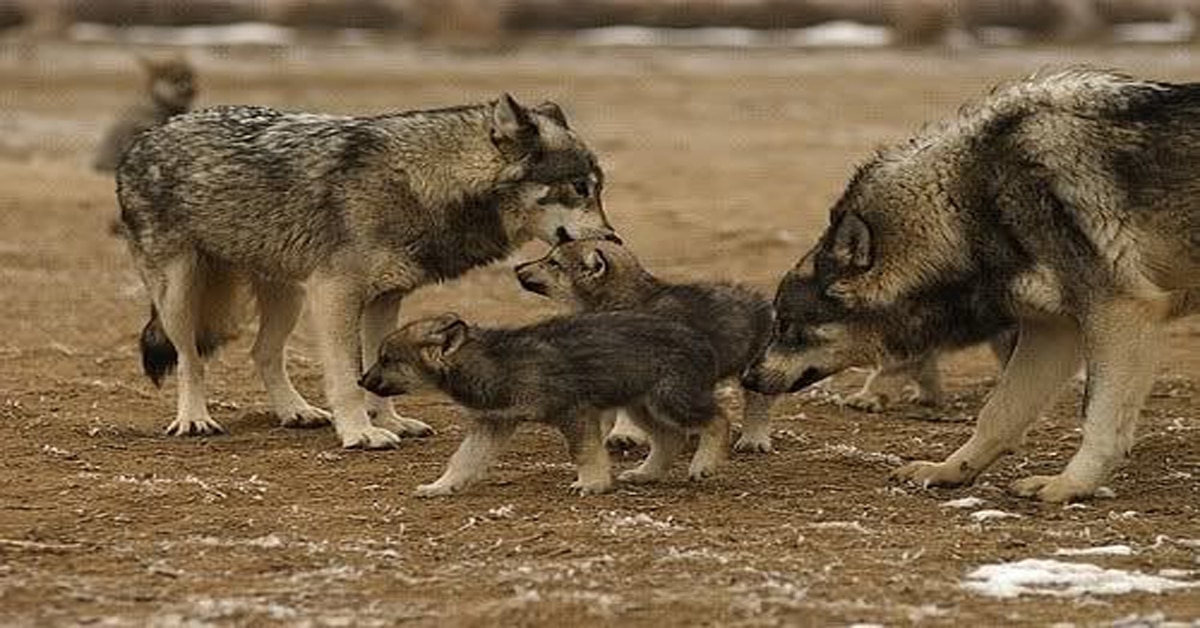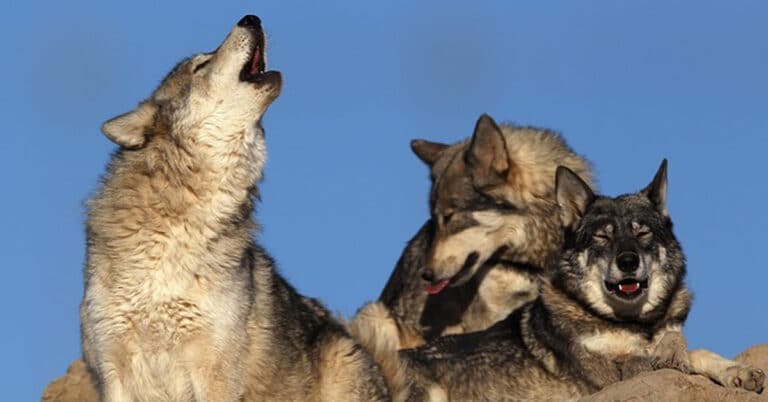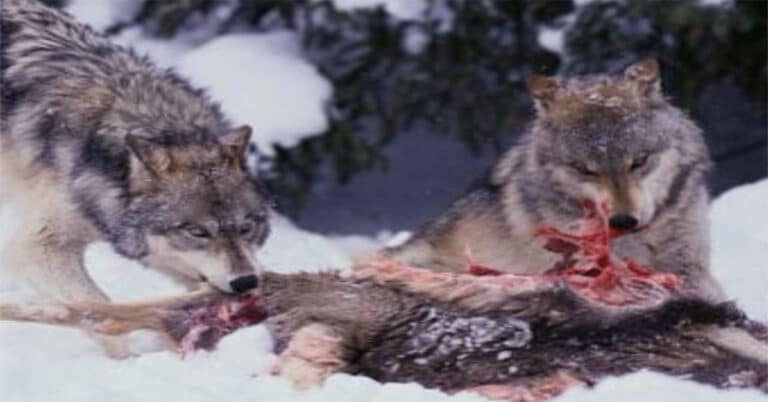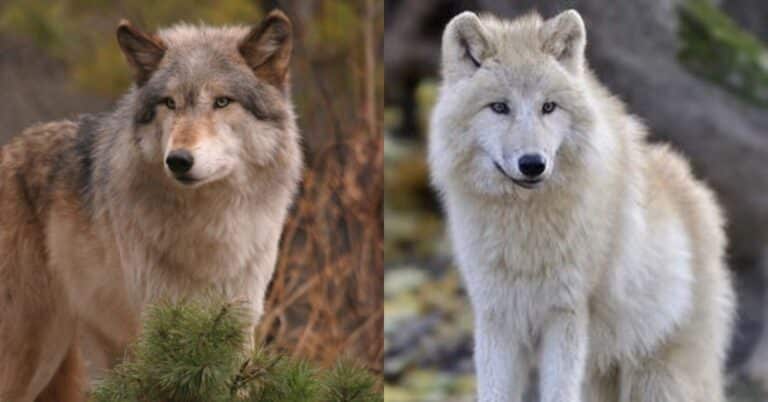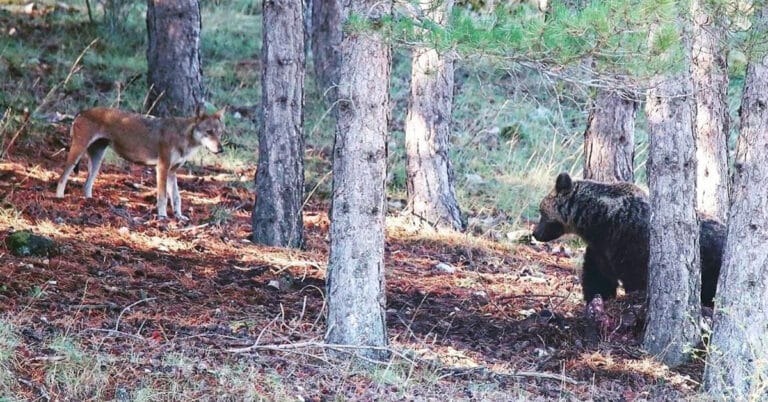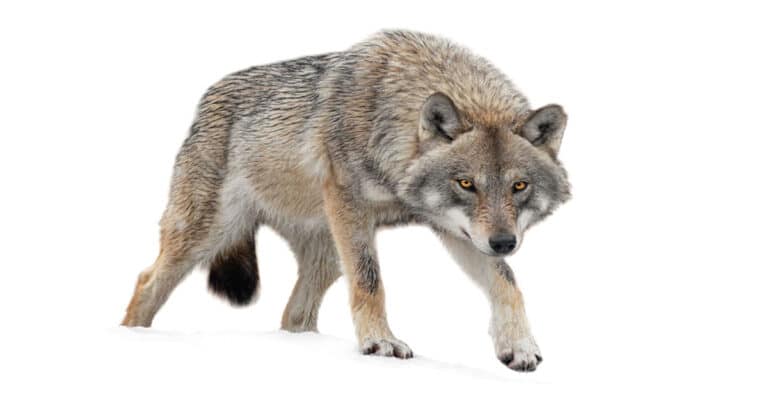What Are Baby Wolves Called?
Since you came across this article, you must be wondering what are baby wolves called. Depending on the animal species, domesticated animals are called all kinds of different names. For example, a baby horse is called a foal, a colt, or a filly. A baby goat is called a kid, or a billy, and so on.
Baby wolves are adorable little creatures that are tiny in size and weigh only one pound. They are undoubtedly one of the cutest canines. The question is not only what are baby wolves called, but also what is the name of a group of baby wolves.
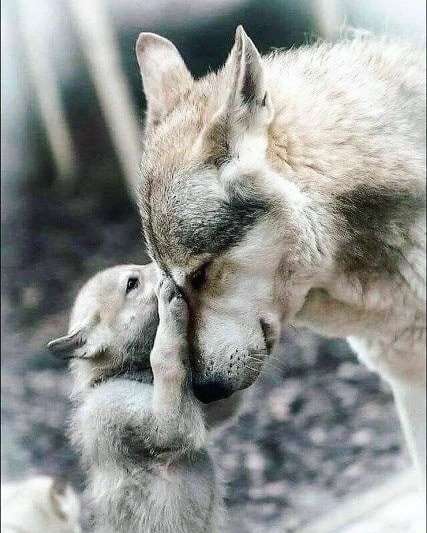
What Animals Have A Similar Name As Wolf Pups?
So, you are wondering what are baby wolves called, right? Similar to baby dogs, wolf babies are called “pups” and sometimes “whelps”. The set or the group of the pups that come from the same mother are called “Litter”.
After finding out what are baby wolves called, let’s move on to the other animals whose babies have similar names. The term “pup” is used to describe the babies of many animals, including dogs. Did you know that even some rodents and shark babies are called pups?
Surprisingly, all of the following animals are called pups:
- Dogs
- Armadillo
- Bat
- Gerbil
- Guinea pig
- Hamster
- Mink
- Mole
- Prairie dog
- Seal
- Shark
Animals that are called pups, alongside other names, are:
- Beavers (Pup, Kitten)
- Coyote (Pup, Whelp)
- Hedgehog (Pup, Piglet)
- Fox (Pup, Cub, Kit)
- Mouse (pup, kitten, pinkie)
- Otter (pup, Whelp)
- Squirrel (Pup, Kit, Kitten)
“Whelp” is also the name of what are baby wolves called, and it is often used to refer to the baby dog or wolf. Even though it may not sound as cute as a pup does, it is used as one of the names for baby wolves and it also refers to the act of giving birth. “Whelp” is a term that is occasionally used to describe a young person. However, it is mostly used in negative content and isn’t generally a compliment.
After discovering what are baby wolves called, let’s move on to learning about their characteristics and features, and maybe we can answer some of your questions about them.
Living Habitat Of Wolf Pups
A wolf is a gregarious animal belonging to the Canidae family. Their habitat is found all around the world and is found in Asia, North America, and parts of northern Europe. There are only three species of wolves, including gray wolves (Canis lupus), red wolves (Canis rufus), and Ethiopian wolves (Canis simensis). This means that the name for what are baby wolves called is the same for all species.
The wolf’s life will remain basically unaltered during the gestation period. Before giving birth, the wolf will live in the designated lair. Male wolves will occasionally assist in making the den more comfortable for the females. This process includes digging the hole for them. In most cases, when male wolves do not help, the female wolf is responsible for preparing the den before giving birth.
Dens are where female wolves give birth to their babies. Dens for these canids can be made out of a variety of materials and in many different places. including holes in the ground, fallen trees, logs, tunnels, and even in the middle of the high grass. Wolves frequently move their cubs to different dens as they get older and mature.
Physical Characteristics of Baby Wolves
What are baby wolves called is sometimes directly related to their physical characteristics. Wolf pups have very beautiful light to dark blue eyes when they are born. The eye color of wolf pups is determined and inherited by their parents. The hue of their eyes changes as they grow older. Their eyes darken, turning golden yellow, amber, orange, or even green! Some wolf pups may even develop mild gray eyes that can be mistaken for blue eyes from afar. Baby wolves develop exceptional hearing as they grow older. Some wolves can detect sounds from up to 3.5 miles away.
Early Life Of Wolf Pup
A wolf pup’s gestation period is roughly 63 days. They are born in the litter and stay with their mothers for approximately two years. Wolf pups are born in the litter, with four to six babies on average. Before giving birth, the mother will either build or discover a den that is suitable for babies. The den is typically a cave or a hole excavated into the ground, but it must be large enough to accommodate both the mother and all of her pups.
The den protects the pups from external threats, the weather, and any predators who might try to get to them. The pups will stay in the den until they are strong enough to go out into the wild, or at least until they are small enough to fit in their “home”. The pups roughly weigh one pound when they are born. Their eyes are also closed at first, but they start to open and see around two weeks. When they can confidently walk, they will leave the den.
When babies are born, they do not have eyes; their ears are not developed, and they have either very little or no sense of smell at all. At this point, not even their mothers know what are baby wolves called. As a result, as infants, these little canines are utterly blind, deaf, and with no olfactory sense. Wolf pups can open their eyes after a few days, but they still need their moms by their side to navigate around their living habitat.
Their mother extracts them from their fetal sacs, cleans them, and consumes the placenta. The puppies can’t move fast and are only able to crawl. Therefore, they can’t even regulate their body temperature, so they need their mother’s continual supervision. A wolf gives birth to up to 13 pups in a litter, which, in the end, usually has 4 to 6 members.
The Growth of the Wolf Pups
For the first 14 weeks of their lives, baby wolves develop swiftly, gaining between 2.6 and 3.3 pounds each week. Their eyes start to open when they are between 11 and 15 days old. However, their vision will be weak at first. They’ll also start to become more active and talkative around this age. They start coming out of the den for brief periods after three weeks.
Wolf pups usually leave the den entirely by 8 to 10 weeks, and by 12 weeks, they begin to join the pack on hunting expeditions. However, in most cases, they are too vulnerable to participate in the process actively. In some cases, the babies at this age do not join the pack and stay as lone wolves.
The Eating Habits Of Wolf Pups
At the earliest stage of life, babies only eat milk. They eat around 4 times a day and get all the nutrition they need from their mothers. They get their first milk teeth and can consume small pieces of regurgitated meat by the time they are around 2 weeks old. Members of the pack will feed them until they are 45 days old.
At this point, they will be able to consume meat on their own alongside the mother’s milk. Pack members take turns delivering food to the puppies as they grow older. The older pack members urge the pup to leave the den for brief periods at the age of four weeks. They will continue to consume their mother’s milk until they are fully weaned, usually between the ages of 8 and 10 weeks.
Threats to the Wolf Babies
When they are first born, they are kept in a dark and frequently filthy cave for the first few weeks before being released into the woods and shrublands. This living environment can be the source of many different illnesses and diseases. These are frequently lethal and put the babies in danger.
Malnutrition and famine are other major concerns. This can be caused by a variety of circumstances, including the mother abandoning the puppies before they are ready. Being abandoned by your mother for some time can lead to disastrous consequences. A wolf pup needs its mother’s milk for the first several weeks, and without it, it will starve and won’t be able to survive. So, another threat to their health and lives is if the mother does not provide enough milk for all.
When the puppies are older, it may be difficult for them to acquire adequate food because of the competition with their packmates. This competition might have a detrimental impact on the wolf pup’s food and nutrition.
Baby wolves have a pretty tough time because they mostly grow up alongside one of the most dangerous apex predators. The main predators of wolves are bears, Siberian tigers, mountain lions, coyotes, and golden eagles. Predators mostly approach the wolf pups and prey on them because of their tiny size and vulnerability. They may be carried away from the den if the adults are not around, and it makes them easy prey. All the threats come from the fact that wild wolf pup mortality ranges from 30 to 60%.
Bottom Line – What Are Baby Wolves Called
Hopefully, you already understand what are baby wolves called and where their names come from. Baby wolves are born in a litter and reach the adult stage at around two years old. They are one of the tiniest and cutest mammals in the world. There is no one answer to the question of what baby wolves are called. Babies are mostly referred to as “pups” and “whelps”. However, it is also interesting what are baby wolves called as a group. When a set of babies are born from the same mother, they are called a “litter.”

Nato is a content writer and researcher with a background in psychology who’s eager to explore the wonders of nature. As a travel enthusiast and animal lover, she hopes to inspire others to discover and cherish the beauty and importance of the natural world.

